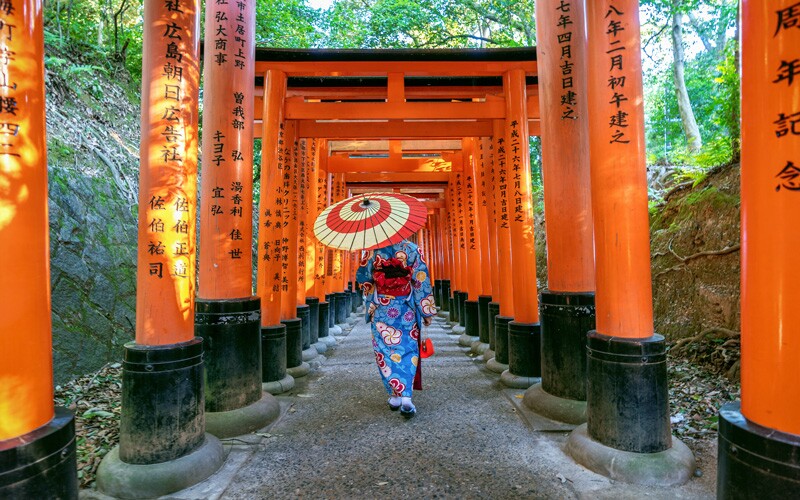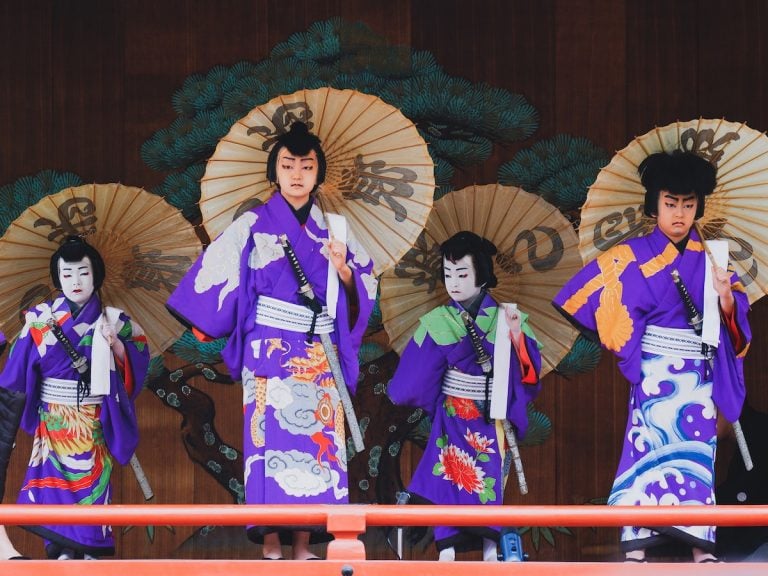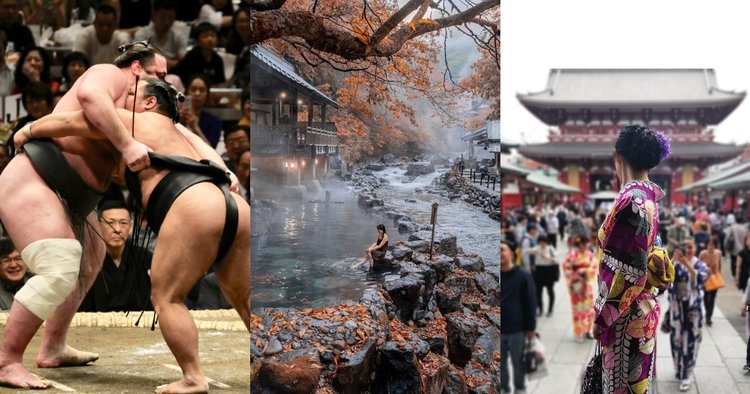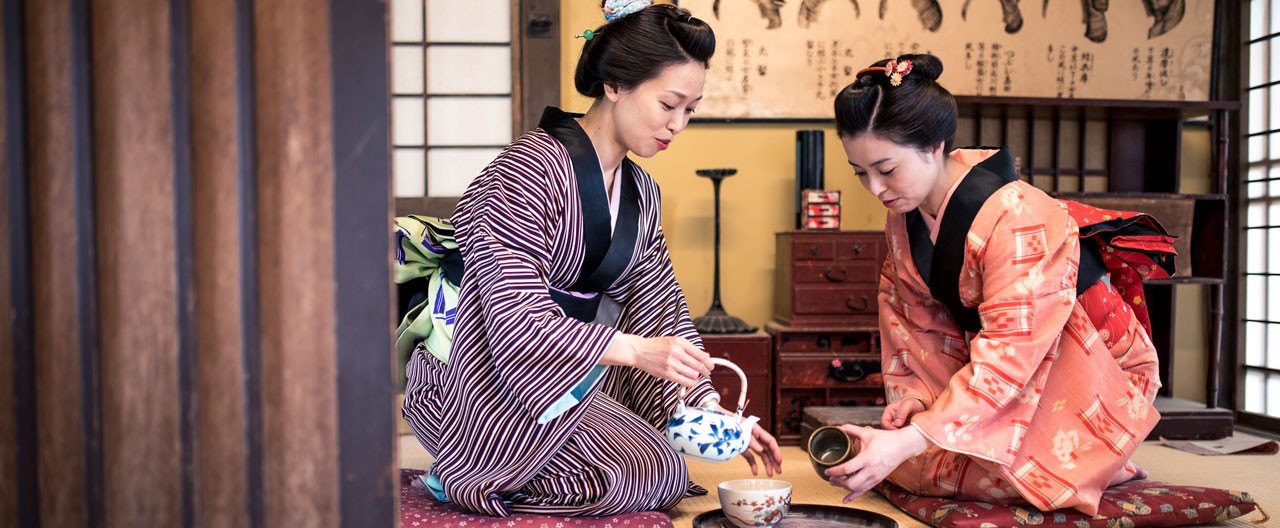Win a Free Trip to Japan!
Experience cherry blossoms and ancient temples
Japan boasts a rich tapestry of culture that seamlessly weaves together its historical roots and modern influences. This fascinating journey through Japan culture reveals the profound impact of Shintoism and Buddhism, highlights the elegance of traditional arts, and showcases the vibrant flavors of Japanese cuisine. Furthermore, Japan’s unique festivals and contemporary trends reflect its ability to adapt while honoring its heritage. As we explore this intersection of tradition and modernity, we gain deeper insights into how Japan continues to shape its identity in an ever-globalizing world.
Historical Foundations of Japanese Culture
Understanding Japan Culture requires a deep dive into its historical foundations, which have shaped its unique identity. The history of Japan dates back thousands of years, influenced by a variety of factors. Here are some key elements:
- Ancient Beginnings: Japan’s history begins with the Jomon period (circa 14,000-300 BCE), where early inhabitants practiced hunter-gathering and pottery-making. This era set the stage for later cultural developments.
- Chinese Influence: During the Asuka period (538-710 CE), Japan adopted components of Chinese culture, including writing systems and Buddhism, which enriched Japan Culture significantly.
- Feudal Era: The Kamakura (1185-1333) and Muromachi periods (1336-1573) introduced the samurai way of life and bushido, the code of conduct for warriors. This hierarchy influenced art, literature, and social structures.
- Isolation and Modernization: The Tokugawa shogunate (1603-1868) established a period of isolation that preserved Japanese traditions. However, the Meiji Restoration (1868) led to rapid modernization, integrating Western influences while attempting to maintain unique cultural elements.
Comparison of Eras in Japanese Culture
| Era | Key Characteristics | Cultural Impact |
|---|---|---|
| Jomon Period | Hunter-gatherer society, pottery | Foundation of early Japanese culture |
| Asuka Period | Adoption of Buddhism, Chinese writing | Spiritual and literary enrichment |
| Feudal Era | Samurai culture, bushido | Development of art, literature, and ethics |
| Tokugawa Shogunate | Isolation, preservation of traditions | Strong cultural identity and stability |
| Meiji Restoration | Modernization, Western influences | Fusion of tradition with modernity |
In summary, the historical foundations of Japan Culture have created a rich tapestry that blends ancient practices with modern developments, allowing Japan to maintain its unique identity in a rapidly changing world.

The Role of Shintoism and Buddhism
Shintoism and Buddhism play pivotal roles in shaping Japan culture, reflecting the nation’s spiritual and philosophical foundations. Each belief system contributes unique elements to daily life, traditions, and societal values.
Shintoism: The Indigenous Faith
- Nature Worship: Shinto, Japan’s indigenous religion, emphasizes the sacredness of nature. Kami (spirits) inhabit natural phenomena, establishing a deep connection between people and their environment.
- Rituals and Festivals: Various rituals, such as the Matsuri (festivals), celebrate agricultural cycles and seasonal changes, showcasing Shinto’s vibrant community practices.
- Shrines: Shinto shrines are integral to local culture, serving as places for worship, community gatherings, and preservation of Japan’s historical heritage.
Buddhism: A Philosophical Amidst Life
- Introduction and Adaptation: Buddhism, introduced from China in the 6th century, integrated with Shinto beliefs, creating a unique spiritual landscape. This fusion is evident in art, architecture, and rituals.
- Cultural Practices: Buddhist practices, such as meditation and mindfulness, significantly influence modern Japanese life, promoting inner peace and self-reflection.
- Temples and Ceremonies: Buddhist temples, like Shitenno-ji, are focal points for various cultural and spiritual activities, preserving centuries of tradition.
Comparative Impact
| Aspect | Shintoism | Buddhism |
|---|---|---|
| Origin | Indigenous | Foreign (from China) |
| Focus | Nature and Kami | Enlightenment and Inner Peace |
| Ritual Style | Festivals and Celebrations | Meditation and Ceremonies |
In conclusion, Shintoism and Buddhism are cornerstones of Japan culture, fostering a rich tapestry of spiritual practices that continue to thrive in contemporary society.
Traditional Arts and Crafts of Japan
Japan Culture boasts a rich tapestry woven from centuries of artistic excellence and craftsmanship. Traditional arts and crafts occupy a significant place in this cultural landscape, reflecting both the aesthetics and the philosophy of Japanese society. Here are some key aspects:
Notable Traditional Arts
-
Calligraphy (Shodo)
- An expressive art form, using a brush and ink to create beautiful characters.
- Reflects the artist’s emotions and intentions through brush strokes.
-
Ceramics (Yakimono)
- Ranges from rustic, hand-thrown pieces to highly polished porcelain.
- Notable styles include Imari and Arita, known for their vibrant colors and intricate designs.
-
Textiles (Kimono)
- Kimono making is a meticulously crafted process where fabric is dyed and woven using traditional methods.
- Each fabric tells a story and symbolizes various aspects of Japan Culture, often linked to seasons or celebrations.
Crafts
-
Origami
- The art of paper folding, turning a simple sheet into intricate designs like cranes and flowers.
- It embodies elegance and precision, often associated with peace.
-
Woodblock Printing (Ukiyo-e)
- A technique that flourished in the Edo period, showcasing beautiful landscapes and cultural themes.
- Artists like Hokusai and Hiroshige brought this art form to global recognition.
In summary, traditional arts and crafts are essential elements of Japan Culture that continue to thrive. They provide insights into Japan’s historical narrative while inspiring contemporary artists both locally and internationally.
Japanese Cuisine: A Culinary Heritage
Japanese cuisine, or Washoku, embodies a deep connection to the land, seasons, and cultural traditions. It stands out not only for its flavors but also for its presentation and the philosophy behind it. Here’s why Japan Culture places such importance on its culinary heritage:
- Seasonality: Japanese meals often highlight seasonal ingredients, emphasizing freshness and variety. As a result, flavors change with the seasons to reflect what nature provides.
- Umami: This fifth taste, recognized globally for its savory depth, plays a crucial role in Japanese dishes. Ingredients like fermented soy products, seafood, and mushrooms enhance this experience.
- Aesthetics: Presentation is key in Japan Culture. Dishes are artfully arranged, and the use of color often reflects the natural world, making every meal a feast for the eyes.
Key Components of Japanese Cuisine
| Component | Description |
|---|---|
| Rice | The staple food, symbolizing life and sustenance. |
| Fish | Fresh, various preparations; essential in sushi and sashimi. |
| Vegetables | Seasonal, pickled, or served as side dishes (tsukemono). |
| Soy | Integral in miso, tofu, and soy sauce, enriching flavors. |
Popular Dishes
- Sushi: Symbol of Japan, combining vinegared rice with various toppings.
- Ramen: A flavorful noodle soup reflecting regional variations.
- Tempura: Lightly battered and deep-fried vegetables or seafood.
Japanese cuisine not only showcases local flavors but also exhibits a profound philosophy of harmony and respect for nature, making it a vital aspect of Japan Culture.

Festivals and Celebrations in Japan
Japan Culture is vibrantly highlighted through its numerous festivals and celebrations, each showcasing unique traditions, regional customs, and local pride. These events play a pivotal role in preserving the country’s heritage while fostering community spirit.
Key festivals in Japan include:
- Hanami (Cherry Blossom Viewing): Signal the arrival of spring, where families and friends picnic under blooming cherry trees, appreciating the transient beauty of flowers.
- Gion Matsuri: Held in July in Kyoto, this festival features grand parades of floats, traditional clothing, and processions, reflecting the historical significance of Japan Culture.
- Tanabata: Celebrated in July or August, it honors the meeting of two star-crossed lovers. People write wishes on colorful strips of paper and hang them on bamboo branches.
Comparison Table of Festivals
| Festival | Season | Main Features |
|---|---|---|
| Hanami | Spring | Cherry blossom viewing, picnics |
| Gion Matsuri | Summer | Floats, parades, traditional costumes |
| Tanabata | Summer | Wish-making, bamboo decorations |
In addition to these festivals, Japan hosts several other local celebrations, ranging from harvest festivals to cultural exhibitions. Each event not only emphasizes local customs but also connects people to their history, making festivals an essential part of Japan Culture. Through these festive gatherings, the reverence for tradition and the joy of community come together, creating an ever-evolving social tapestry.
Modern Influences on Japanese Society
Japanese society today beautifully intertwines traditional values with modern influences, leading to a unique cultural landscape. Various factors shape this evolution, making Japan culture a fascinating subject for exploration. Here are key influences that mark contemporary Japan:
- Globalization: The influx of Western lifestyles and ideas has dramatically impacted Japanese culture. For instance, fashion choices in urban areas now often blend traditional and contemporary elements.
- Technology: Japan is renowned for its advanced technology. Innovations like robotics and artificial intelligence significantly influence daily life, from smart homes to cutting-edge entertainment.
- Pop Culture: The global phenomenon of anime, manga, and video games has positioned Japanese pop culture at the forefront of artistic expressions. Many young people incorporate these elements into their identity.
- Social Media: Platforms like Instagram and Twitter enable rapid exchange and mixing of cultural ideas, allowing Japanese creators to showcase traditional arts (such as calligraphy and origami) alongside modern forms.
Comparison of Traditional vs. Modern Influences on Japan Culture
| Aspect | Traditional Influence | Modern Influence |
|---|---|---|
| Fashion | Kimono and yukata | Street fashion and brands |
| Arts | Ikebana, calligraphy | Anime, digital art |
| Cuisine | Sushi, ramen | Fusion dishes, fast food |
| Values | Family-centric | Individualism, creativity |
In summary, modern influences on Japanese society enrich and diversify Japan culture, creating a vibrant mosaic of old and new that continues to evolve.
Technology and Innovation in Contemporary Japan
Japan Culture is deeply intertwined with technology and innovation, serving as both a driving force and a reflection of societal values. Renowned for its advanced technology, Japan has pioneered many innovations that shape the modern world. Here’s a look at how these elements elevate Japan Culture:
- Robotics and Automation: Japan leads the world in robotics, with companies like Honda and Sony producing humanoid robots. These robots serve various purposes, from practical applications in industries to companionship and entertainment.
- Consumer Electronics: Brands such as Sony, Panasonic, and Nintendo have revolutionized the global electronics market. The blend of aesthetics with cutting-edge technology exemplifies Japan’s approach to design and functionality.
- Transportation: Japan’s Shinkansen, or bullet trains, exemplify efficiency and speed. They illustrate Japan Culture’s harmony between tradition (like punctuality) and innovation (providing fast and safe travel).
- Sustainable Energy: As Japan faces environmental challenges, the country invests in renewable energy sources and smart technologies, reflecting a commitment to balancing progress with sustainability.
| Aspect | Traditional Japan | Contemporary Japan |
|---|---|---|
| Technology | Primarily manual tools | Advanced robotics |
| Communication | Face-to-face interaction | Digital connectivity |
| Transportation | Rickshaws and walking | Smart trains and cars |
| Entertainment | Kabuki and Noh theater | Video games and anime |
In summary, Japan Culture brilliantly marries tradition with modern technology, ensuring a future where innovation continues to thrive while honoring its diverse heritage.

Fashion Trends: From Kimono to Street Style
Japan culture boasts a rich tapestry of fashion that elegantly intertwines tradition and modernity. The evolution of Japanese clothing reflects the nation’s unique history while embracing global influences. Here’s a look at key fashion trends in Japan today:
- Kimono: This traditional garment, characterized by its intricate designs and meticulous craftsmanship, symbolizes Japan’s cultural heritage. Worn during special occasions, Kimonos are made from silk and adorned with beautiful patterns that signify various meanings.
-
Street Style: In contrast, contemporary street style in Japan, particularly in districts like Harajuku, embraces creativity and individuality. Key features of this trend include:
- Bold Colors and Patterns: Young fashionistas often mix vibrant colors and eclectic prints.
- Layering: Combining various textures and styles to create unique outfits.
- Accessories: From oversized bows to striking shoes, accessories play a pivotal role in street fashion.
| Traditional Fashion | Modern Fashion |
|---|---|
| Kimono | Streetwear |
| Yukata | Techwear |
| Obi | Vintage-inspired |
While traditional garments like Kimono hold a special place in Japan culture, the rise of street style reflects the nation’s adaptability and openness to change. This blend of the old and the new not only highlights the dynamic nature of fashion in Japan but also solidifies its position as a major influence in global fashion trends.
Cultural Etiquette and Social Norms
Understanding Japan Culture requires a deep appreciation of its unique etiquette and social norms, which play a vital role in daily interactions. Here are some key aspects to keep in mind when engaging with Japanese society:
- Respect and Politeness: Bowing is a common gesture of respect. The depth of the bow signifies the level of respect, with deeper bows often reserved for formal situations.
- Gift Giving: Presenting gifts is a customary way to express gratitude or goodwill. Offering a gift should be done with both hands, and it’s polite to wrap it beautifully.
-
Dining Etiquette:
- Chopsticks: Never stick chopsticks upright in rice, as this resembles Japanese funerary customs.
- Toasting: When drinking with others, say "kanpai" (cheers) and ensure everyone clinks glasses before drinking.
- Dress Code: First impressions are crucial. While casual wear is acceptable in many situations, dressing modestly and appropriately shows respect.
- Silence: In Japan Culture, comfortable silence is often preferred. Speaking softly and allowing pauses in conversation demonstrates thoughtfulness and respect.
In summary, Japan Culture encapsulates a rich tapestry of etiquette and norms that guide social interactions. Familiarizing yourself with these customs enhances mutual respect and fosters meaningful connections within this fascinating society.
The Future of Japanese Culture in a Globalized World
As the world becomes increasingly interconnected, Japan culture faces both challenges and opportunities. The globalization phenomenon brings diverse influences, reshaping traditional practices while fostering innovation. Key aspects to consider include:
- Cultural Exchange: Global access to information allows for a greater exchange of ideas, promoting awareness and appreciation of Japan culture abroad. This open dialogue can strengthen cultural ties and inspire new forms of artistic expression.
- Youth Influence: Young generations in Japan are redefining cultural norms. They blend traditional elements with contemporary styles, creating unique expressions that reflect their identities. For instance, the resurgence of street fashion incorporates traditional motifs, showcasing the adaptability of Japan culture.
- Preservation Efforts: Globalization necessitates a balance between modernization and preservation. Organizations and individuals strive to maintain traditional arts, crafts, and practices, ensuring they thrive in a rapidly changing environment.
| Aspect | Traditional Focus | Globalized Influence |
|---|---|---|
| Art & Innovation | Classical practices and craftsmanship | Fusion of styles, new media |
| Cuisine | Regional ingredients and dishes | Global flavors, international cuisine |
| Fashion | Kimono and ceremonial wear | Street style and Western influences |
In conclusion, while globalization challenges Japan culture, it also offers a platform for creativity and evolution. By embracing change while honoring traditions, Japan can navigate the future confidently, ensuring that its cultural heritage flourishes globally.
Frequently Asked Questions
What are some key aspects of traditional Japanese culture?
Traditional Japanese culture is characterized by a deep appreciation for nature, art, and craftsmanship. Key aspects include tea ceremonies, calligraphy, and ikebana (flower arranging). There’s a strong emphasis on rituals in everyday life, as seen in festivals and religious practices that celebrate seasons and harvests. Traditional architecture, such as wooden houses with sliding doors and tatami mats, reflects simplicity and harmony with nature, while traditional clothing like kimonos showcases intricate patterns and honor their historical significance.
How has modernity influenced Japanese culture?
Modernity has had a profound impact on Japanese culture, blending traditional values with contemporary practices. This influence is evident in various aspects such as fashion, technology, and entertainment. Cities like Tokyo showcase skyscrapers alongside historical temples, symbolizing this fusion. The rise of anime and manga as global phenomena illustrates how traditional storytelling has adapted to modern media. Additionally, Japan’s technological advances can be seen in robotics and smart cities, reflecting a culture that embraces innovation while cherishing its rich heritage.
What role does food play in Japanese culture?
Food plays a central role in Japanese culture, symbolizing both tradition and community. Dishes like sushi, ramen, and tempura reflect the country’s emphasis on seasonal ingredients and fresh flavors. The aesthetics of food presentation are equally important, with rituals around dining that promote mindfulness and appreciation for flavors. Festivals often feature food stalls, highlighting seasonal specialties and cultural significance. Furthermore, food is a medium for expressing hospitality, with the concept of ‘omotenashi’ representing a deep-rooted tradition of service and respect in dining experiences.
Are there specific customs to observe when visiting Japan?
Yes, there are several important customs to observe when visiting Japan. Upon entering homes or certain establishments, it is customary to remove shoes to maintain cleanliness. Bowing is a traditional greeting that conveys respect. It’s also important to be mindful of dining etiquette, such as saying ‘itadakimasu’ before meals and ‘gochisosama’ afterward to show gratitude. Additionally, avoiding loud conversations in public spaces and keeping personal hygiene in check, especially on public transportation, are essential customs that reflect Japanese politeness and respect for others.
What are some popular festivals in Japan that celebrate its culture?
Japan is home to a wide array of vibrant festivals that celebrate its rich culture. The cherry blossom festival, or ‘Hanami’, is a springtime event where people gather under blooming sakura trees to appreciate their beauty, symbolizing renewal. The Gion Matsuri in Kyoto is one of the most famous festivals, featuring elaborate floats and traditional clothing. Other notable festivals include the Awa Odori dance festival in Tokushima and the Nebuta Matsuri in Aomori, showcasing lively parades and traditional performances that highlight regional cultures and communal spirit.
